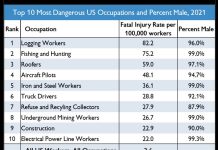It became a depressing tendency in the late 1970s to bestow optimistic-sounding names on increasingly scrunched-down and browbeaten economy cars that were at best proletarian-geared “transportation modules” as enjoyable as day-old coffee and stale bagels. The theory was that people might be able to feel better about themselves by negating reality — like calling a “stock boy” a “sales associate.”
In better days, when driving was something to be looked forward to, cars were named after vigorous animals or given names that at least suggested something positive, such as speed or graceful athleticism. Impala, Barracuda, Tempest, Monte Carlo. A man could proudly tell his buddies about his new Fairlane GTA or the Challenger 340 Six Pak in his garage. Even station wagons used to have great names like Biscayne, Vista Cruiser, Estate Wagon, and Park Avenue Ultra.
But what, exactly, is an “Omni”?
According to Webster’s dictionary, it’s more a prefix than a word in its own right: “A combining form meaning all, everywhere.” As in “omniscient” or “omnipresent”? Perhaps Chrysler’s advertising and marketing people figured that people might look upon the Omni as being the “all-car” that answered every transportation need. Except, of course, deriving any enjoyment whatever from the trip. This was a car to slug to your soul-sucking daily grind at the Shoe Outlet or mall food court in – or your after-hours gig as a minimum-wage security guard. All-miserable would have been much more accurate, but it wouldn’t fit on the fender.
As for “Horizon” – the Omni’s Plymouth-badged corporate cousin – well, things were looking pretty dim if all you could afford was a cube-shaped little drone-mobile that marked you as a loser living on the periphery of the service-sector economy.
Weirdly enough, one of the fastest cars of the mid-1980s was a modified Omni — the Omni GLH and GLH-S.
“GLH” stood for “Goes Like Hell,” and it wasn’t a lie. (The “S” still meant it was a shitbox, though a quick shitbox.)
Carroll Shelby of Mustang legend had a hand in putting the package together for Chrysler and even allowed the use of his name to help pitch the car. The GLH packed a turbocharged punch and as much as 175 horsepower in the GLH-S, which could cover the standing quarter-mile in less than 15 seconds. That was exceptionally quick for the time, right up there with V-8 Camaro Z28s and 5-liter Trans-Ams.
But no matter how many Shelby badges it had, it was still just a powerful — and just as ugly — Omni. The wise old mechanic had it right: You can’t polish a turd… .
Five Fast Facts
The initial run of Omnis and Horizons used a VW-designed 1.7-liter engine that developed 70 horsepower. It was replaced in 1981 with Chrysler’s own 2.2-liter engine — a version of which was still in use in 1990s-era Dodge Neons and also the PT Cruiser.
Special equipment that came with the Omni GLH and GLH-S models included a different camshaft, milled engine block (.020) to raise the compression ratio, long-runner intake manifold, slotted alloy wheels and 15-inch Goodyear speed-rated “Gatorback” tires, Koni shocks, and, on GLH-S models, a Garret/Air Research turbocharger that boosted output from 110 to between 146 and 175-horsepower in the “Turbo II” models. (These modifications helped you avoid being recognized as the owner of an Omni by driving faster.)
The Omni/Horizon platform was used to “spin-off” a pair of compact pick-up trucks in 1982 — the Dodge Rampage and the Plymouth Scamp. One of the rarest sub-models is the Scamp GT, of which just 1,380 examples were built.
The Omni and Horizon hold the distinction of being the first American subcompact economy cars with front-wheel-drive, which became the dominant layout for almost all passenger vehicles by 1990.
Unlike the Chevy Chevette, Ford Pinto, and other economy cars of the era, which also came as coupes, hatchbacks, sedans, and even wagons (in the Pinto’s case) the Omni and Horizon were never offered in multiple body styles, but were sold as boxy four-door sedans only.
Excerpted from “Automotive Atrocities” (MBI, 2004) http://www.amazon.com/s/ref=nb_sb_noss?url=search-alias%3Daps&field-keywords=Automotive+Atrocities&x=0&y=0











PS Dan. I had the 5 speed manual, and went through clutches, like Liz Taylor went through husband’s. 25,000 miles later, I was up to 5 clutch. replacements.
The standing joke was that if I was late, people would say “I guess John is getting his 5,000 mile oil and clutch change.
For those of you who are thinking that I didn’t know how to drive a standard, I cut my teeth on a Mercedes 300SEL 6.3 and A Citroen SM.
The Dodge Colt twin stick had almost 100,000 miles with the original clutch.
Dan, the only work that I can think of for you to do, is A) Get your aggressions and beat it to its death with a sledgehammer, or B) if you are getting a divorce, let the ex have it as part of the settlement.
In 1985 I bought a GLHT because I wanted performance and at my height, just over 6 foot, my head brushed the headliner in a VW GTI and, still in the wake of the Carter gas crisis, I wasn’t going to buy a gas guzzling V8. That GLHT came with a 5 year, 50,000 mile warranty and Chrysler lent me the purchase money at 5% interest at a time when other auto loans were twice that rate.
The 1986 GLHS was as quick, or even quicker, than contemporary Corvette and Mustang V8s, and those Shelbys pulled skid pad numbers with the best of them as well. All at half the price of its performance peers.
I still have that GLHT, uprated to Shelby GLHS specs. Great car.
glhs stands for goes like hell & (then) some.
Yup – and here’s a story … a true one!
Back circa 1988 I had an ’80 Z28 with a pretty worked up 350 in it. I got into a stoplight tangle with a new GLH-S and that little box sweated my Camaro. He almost beat me coming off the line – and he damned near caught up with me. It was a close shave.
I was impressed!
Actually Omnis\Horizons were sold as slightly shortened two doors during the 80’s, they were the base for the the Charger and the Turismo.
And as an owner of a 1990 Horizon these are actually quick with a 2.2, handle pretty darned well too.
do u have a lot of knowledge on this car? I am looking to do work on one and not much info is available
Nice article. I remember the car fairly well. I always considered it an entry level vehicle, something cheap enough that it could be bought new by young people. It looked like a VW Golf or Rabbit which I imagine it was modeled after either directly or indirectly. I seem to remember it being driven mainly by women so perhaps it was an attempt to capitialize on the emerging working women phenom (which is now the norm).